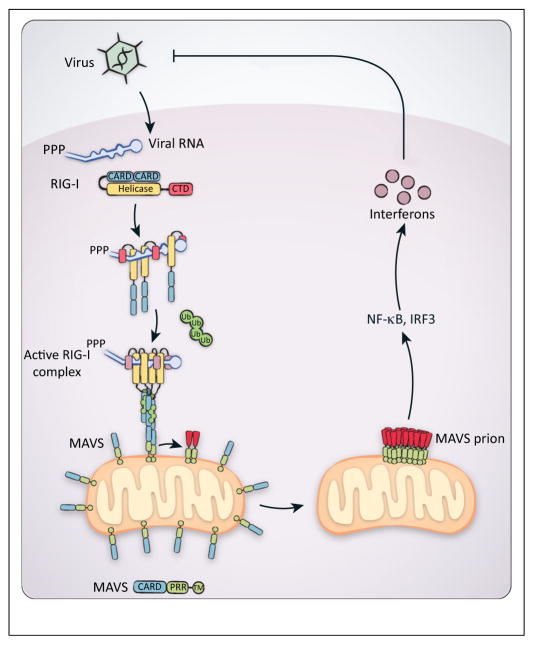Figure 1.
Model of RIG-I-dependent MAVS activation. Following virus infection, 5′ppp–RNA is generated in the cytoplasm and recognized by RIG-I, bringing multiple RIG-I proteins into proximity and releasing its N-terminal tandem CARDs from autoinhibition. Free RIG-I CARDs can then bind to unanchored K63-linked polyubiquitin, which induces the formation of an active RIG-I tetramer. The active RIG-I tetramer then interacts with the mitochondrial adaptor protein MAVS, through CARD–CARD interactions, and converts MAVS into its prion form. The initial MAVS prion seeds then rapidly convert other native MAVS proteins into the filamentous prion form, eventually leading to the activation of NF-κB and IRF3 for antiviral interferon production. Abbreviations: 5′ppp, 5′ triphosphates; CARD, caspase activation and recruitment domain; K63, lysine 63; NF-κB, nuclear factor-κB; IRF3, interferon regulatory factor 3.

